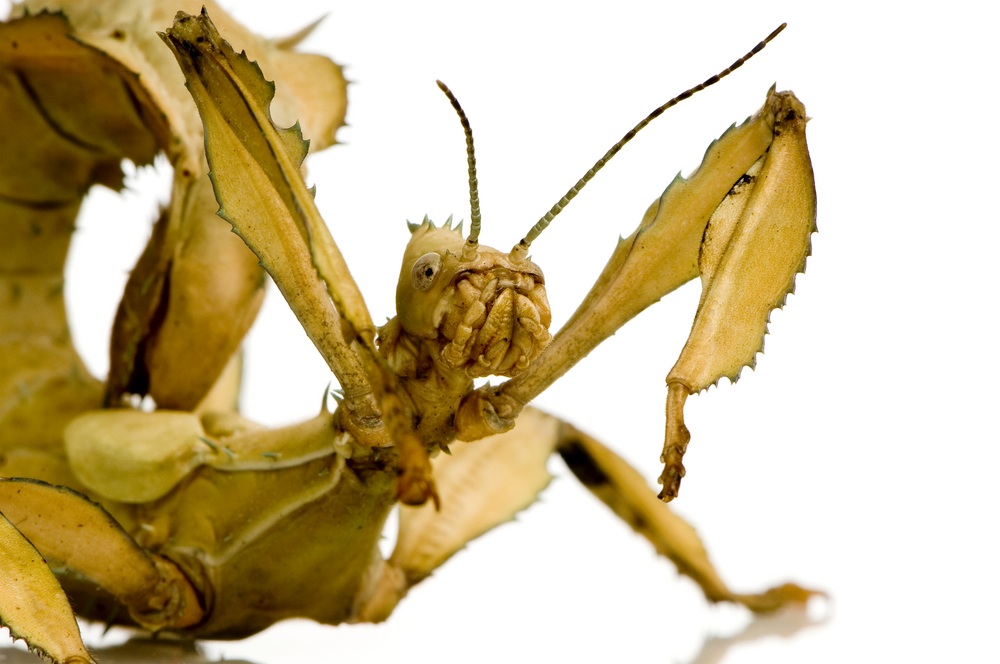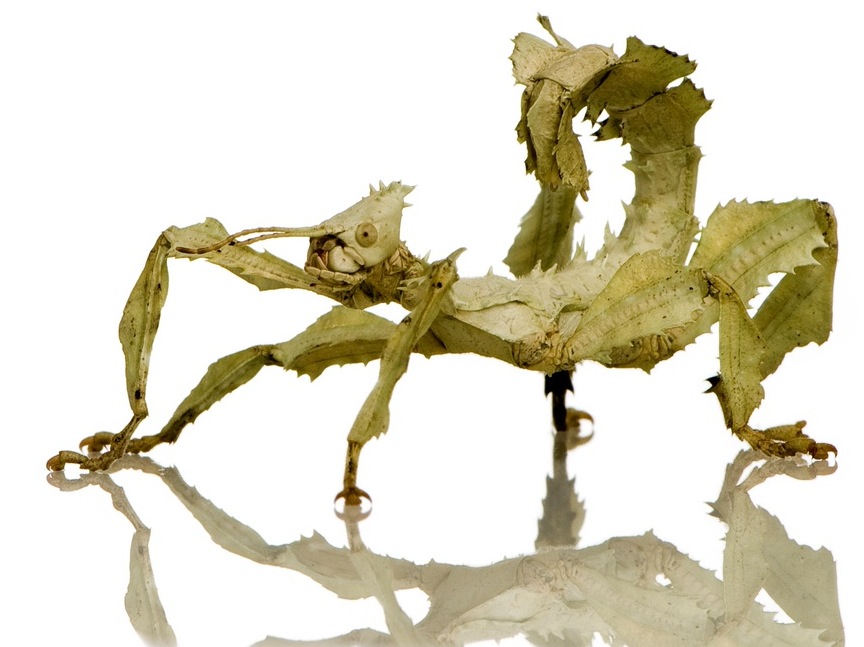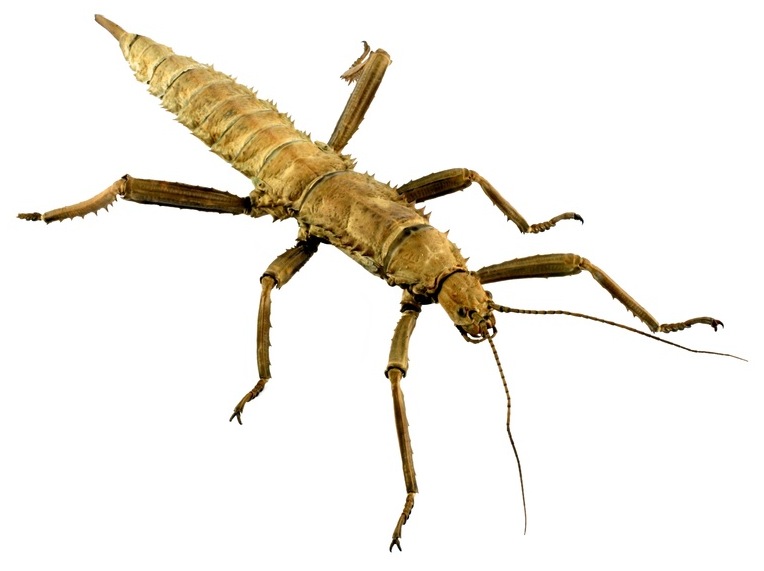I remember keeping what I thought were giant spiny stick insects in the past, but the ones that my local shop is offering look quite different to those that I had, having a much flatter shape. Are there two types? Do these flatter ones need different care?


You probably kept the giant prickly (or spiny) stick insect known scientifically as Extatosoma tiaratum (shown here), which originates from Australia. The ones that you've seen recently would almost certainly have been the giant spiny stick insect, known scientifically as Eurycantha calcarata (see below), which originates from New Guinea.
Eurycantha calcarata is quite an unusual species in terms of its behaviour, in that it is far more terrestrial than most other stick insects, preferring to live at or close to the ground, rather than on branches. It requires a temperature of around 25°C (77°F), with a heat pad under thermostatic control fixed to the side of its enclosure, rather than below. Coarse bark can be used as the substrate, and provide retreats on the floor of the enclosure, such as cork bark, where these phasmids can hide away during the day. They tend to be nocturnal in their habits.
Unlike other stick insects, a very shallow container of water can be provided, where they will drink. The relative humidity in their quarters needs to be maintained between 70-80%. Adult females can grow to at least 12.5cm (5in) long, being noticeably larger than males. Males can also be identified once mature by the presence of a large and very sharp, thorn-like spike on each femur (the upper part of the hind leg).
Handle with care!

This is not a good species for children, because there are also plenty of other smaller spikes as well running down the body, and these too will make handling difficult, particularly as these stick insects will often latch on to you with a leg. The safest way to pick them up is to grasp the body gently with your thumb and first finger, between the two rear pairs of legs.
Typical stick insect foods will be eaten, such as bramble, ivy and rose, and I found that they would also eat grass quite readily - the only stick insect in my experience that would do so.
Breeding is straightforward, although mature males should be kept apart, as they may fight. It can take six months for the eggs to hatch, and a similar interval for the nymphs to attain maturity. Their lifespan is likely to be between a year and 18 months.
You can read more about stick insects and their care here and the stunning black beauty species is profiled here.